Chickadee-dee-dee
When you bird “from Alaska through the southern half of Canada and south to roughly half of the lower 48 U.S. states,” you’ll hear that call.
Black-capped Chickadee (Poecile atricapillus). Common feeder visitors “often heard before they’re seen.”
They’re named for how they sound—call, not song
Bird Academy explains calls are “shorter, less rhythmic sounds” that communicate threat and location. Birdsong is “a relatively structured vocalization produced while attracting a mate or defending a territory.”
Mnemonics for the Black-capped Chickadee’s song are hey-sweetie,1 fee-bee/fee-bee-ee, and cheeseburger. A “two or three syllable” whistled song. In his 1999 study, Geographic Variation in Black-capped Chickadee Songs and Singing Behavior, Donald Kroodsma2 states:
males sing a simple two-tone "fee-bee-ee" (with the "fee" slightly higher in frequency than the "bee-ee" and an amplitude break between the "bee" and "ee"), and each male shifts the pitch of his single song type over a range of about 800 Hz.
David Sibley, in What It’s Like To Be A Bird, says chickadees are “constantly chattering.”
Hey-sweetie, or fee-bee-ee, is two pitches: high then lower. In the Pacific Northwest, Black-capped Chickadees (Poecile atricapillus) sing “3 or 4 notes on the same pitch.”
Applied Bioacoustics says in Oregon and Washington the hey-sweetie song
is absent or very rare…Interestingly, the area in which "hey-sweetie" is not sung is, approximately, the range of one of the subspecies of Black-capped Chickadee, Poecile atricapillus occidentalis called "Oregon Chickadee" by some. According to Susan Smith in The Black-capped Chickadee, (1991, Cornell Univ. Press) the range of this subspecies extends up into southwestern British Columbia, where "hey-sweetie" is sung.
BirdNote explains Black-capped Chickadees sing differently off the coast of Massachusetts.
On Tuckernuck Island they sing “two high tones, followed by one low tone.”
On Martha’s Vineyard, two notes on a high tone—“no change in pitch.” Martha’s Vineyard Magazine says this was noticed by William Brewster in the late 19th century, and in 1958 Aaron Bagg addressed it in Mass Audubon’s magazine.
Kroodsma explains it’s uncommon to hear a geographical variant of a chickadee song.
Although songs of many species vary geographically (e.g. Baker and Cunningham 1985), the fee-bee-ee [hey-sweetie/cheeseburger] song of Black-capped Chickadees is remarkably invariant across most of their range in North America (see Hailman 1989, Kroodsma et al. 1995).
Birds have to hear a song to learn it. These unique songs “may have arisen because these populations are sedentary and isolated” on islands. Movements of mainland chickadees “could promote uniform behavior from coast to coast among mixing populations.” Song uniformity might be “maintained by young males learning an ‘average’ song from their sound environment.”
On Martha’s Vineyard, chickadee songs vary across the island. Martha’s Vineyard Magazine explains:
Kroodsma speculates that Vineyard chickadees developed distinctive dialects back when the Island was largely cleared of trees by European settlers, leaving isolated pockets of chickadee habitat. After reforestation, the dialects…must have been ingrained enough to remain so audibly distinct.
Chickadees on 6.145 square mile Chappaquiddick—527 feet and a couple minutes by ferry from Martha’s Vineyard—sing “a monotonal hey-sweetie, sweetie-sweetie, or sosweetie-sweetie.”
Chappaquiddick’s was the most similar song to the mainland’s hey-sweetie. The monotonal song was “common on Chappaquiddick (47 of 78 songs in our sample, or 60%),” but “rare on Martha's Vineyard (only 3 of 471 songs, or <1 %).”
What do dees mean?
The number of dees in a Black-capped Chickadee’s call is commensurate with perceived threat. More danger, more dees. Kevin Burrell calls it “the dee-meter.” Scientists “use terms like ‘social complexity hypothesis’ and ‘adaptive significance of call variation in parids.’”
Other species know what dees mean; chickadee calls help them become aware of threats.
This University of Washington article explains the Black-capped Chickadee’s system of calls is “far more subtle and information-packed than scientists previously imagined.”
Wouldn’t something large, like a human, warrant more dees? Size is not the issue, it’s danger specifically to chickadees. An American Kestrel (Falco sparverius) might get more dees than a larger buteo. Schlitz Audubon Nature Center explains:
If a chickadee is warning the rest of the group of a perched Great-horned Owl (who is not generally a predator of chickadees), he may use four ‘dees’ after the ‘chick-a.’ But, if a Sharp-shinned Hawk (a main predator of chickadees) is perched nearby, it could have seven additional ‘dees.’
I once wrote for The Center for Humans and Nature, “I at least deserve a chicka-dee-dee-dee with an equal dee-count given for a tabby cat.” I don’t.
Chickadees have a specific call—seet or si-si-si—for “a threat on the wing, a shrike or sharp-shinned hawk,” explains Jennifer Ackerman in The Genius of Birds. In The Bird Way, she adds: “More dees means a smaller, more dangerous predator…a small agile bird of prey such as a merlin or a northern pygmy owl may draw a long string of up to twelve dees.”
To go back to Schlitz Audubon Nature Center, if a chickadee sees a Sharp-shinned Hawk (Accipiter striatus), “a high but quiet ‘Tseet’ call will go out from a male telling everyone to freeze in place…Once danger has passed, a male will give an ‘all clear’ chick-a-dee-dee-dee.”
Sibley says chickadees “can store up to a thousand seeds in a day,” remember where each is, “and at least some information about which ones are the best quality and which ones have been eaten already.”
They have an elaborate language, “complete with syntax that can generate an open-ended number of unique call types,” says Ackerman. It’s easy to write them off—just a chickadee—but they’re interesting if you take the time to learn.
Among the Black-capped Chickadee photos, I snuck in a Carolina (Poecile carolinensis). Which one? I numbered the pictures so you can answer in the comments.
Hey-sweetie is sung to attract mates. Picture a male courting a female. With passerine charm—to be alliterative, songbird suaveness—he sings: “Hey, sweetie.” He leaves before returning with a dead bug for “mate feeding.” Who can say no to a dead bug? She accepts with “a high call, and quivering wings.”
Kroodsma authored The Singing Life of Birds, Birdsong by the Seasons, and the Backyard Birdsong Guides. He received The American Ornithologists’ Union’s Elliott Coues Award, the American Birding Association’s Robert Ridgway Distinguished Service Award, and The Wilson Ornithological Society’s Margaret Morse Nice medal.


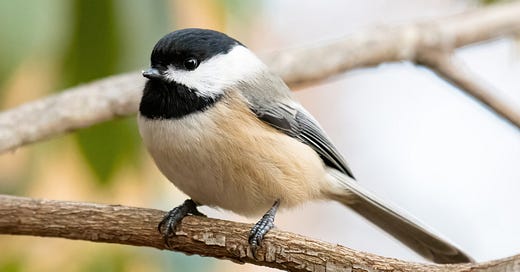




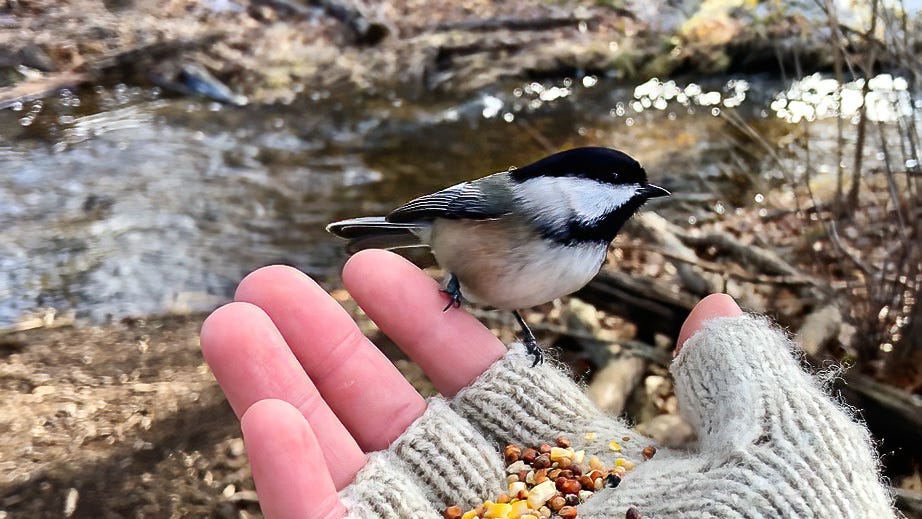
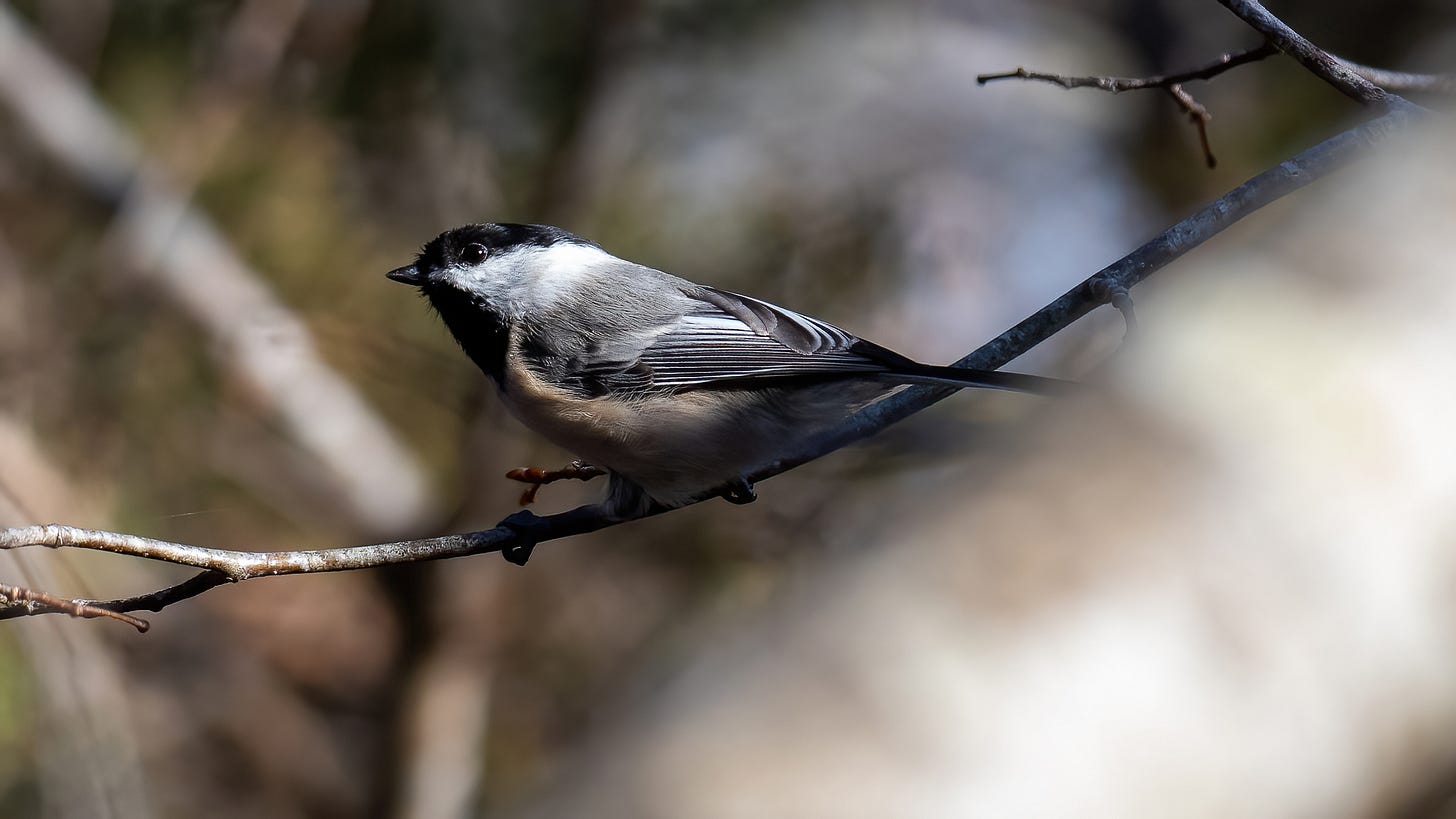


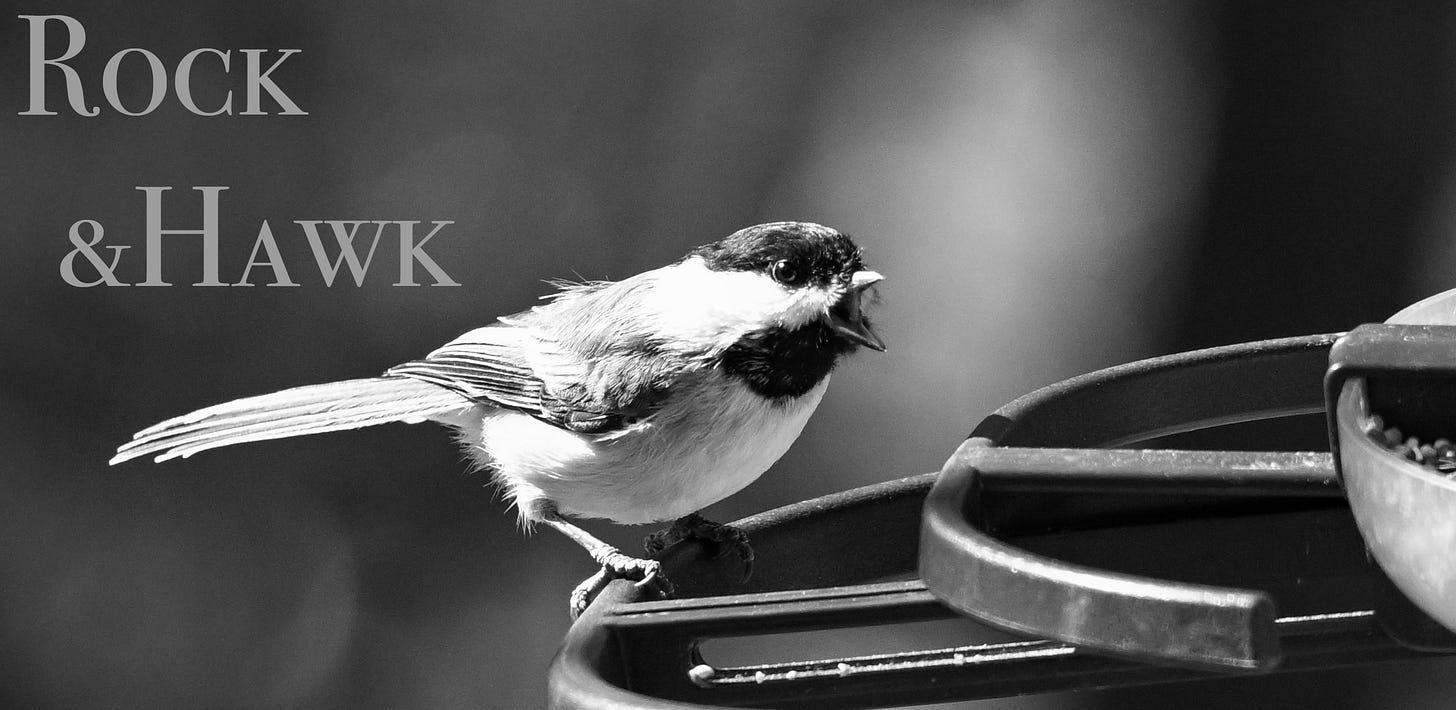


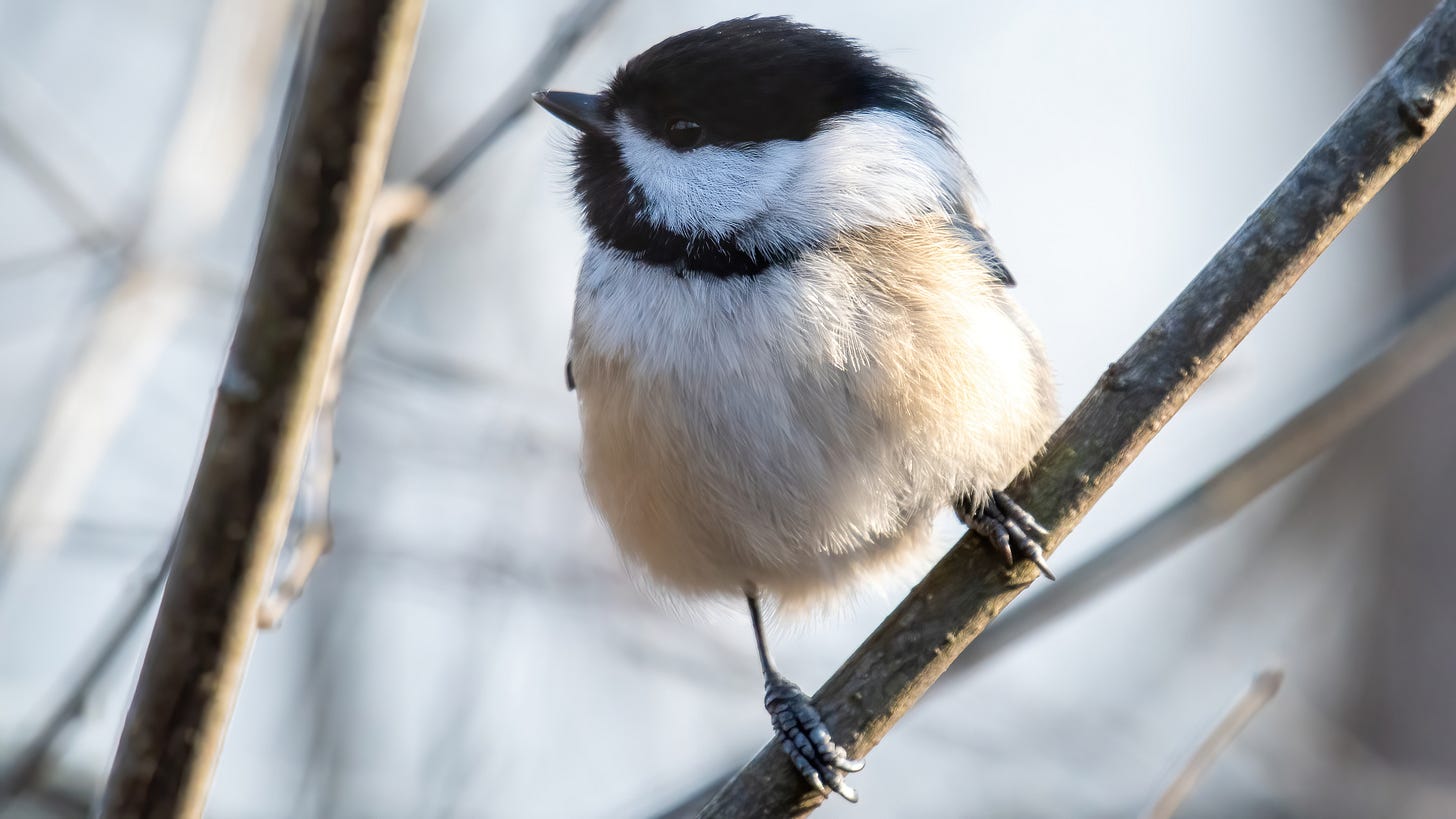
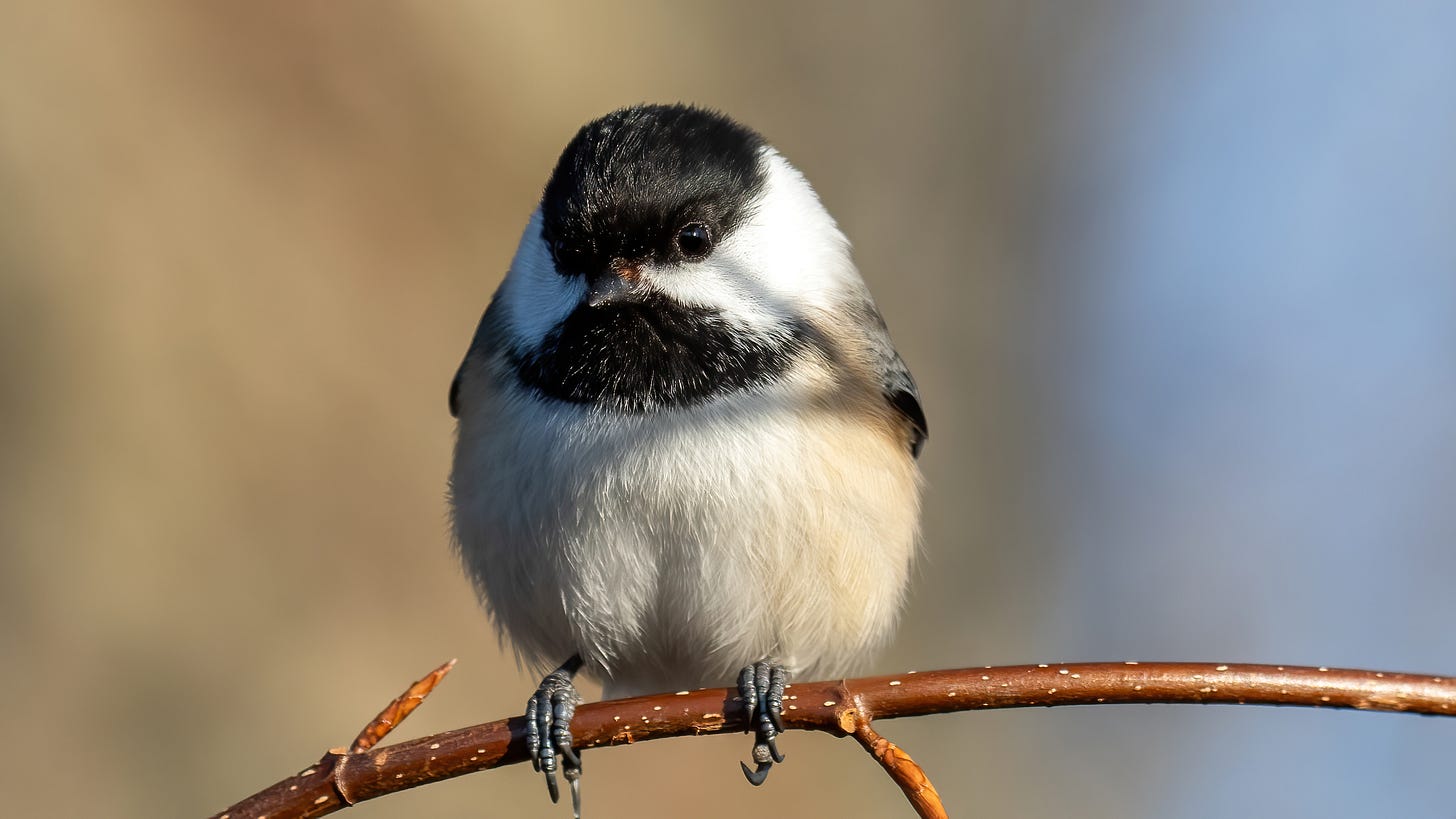

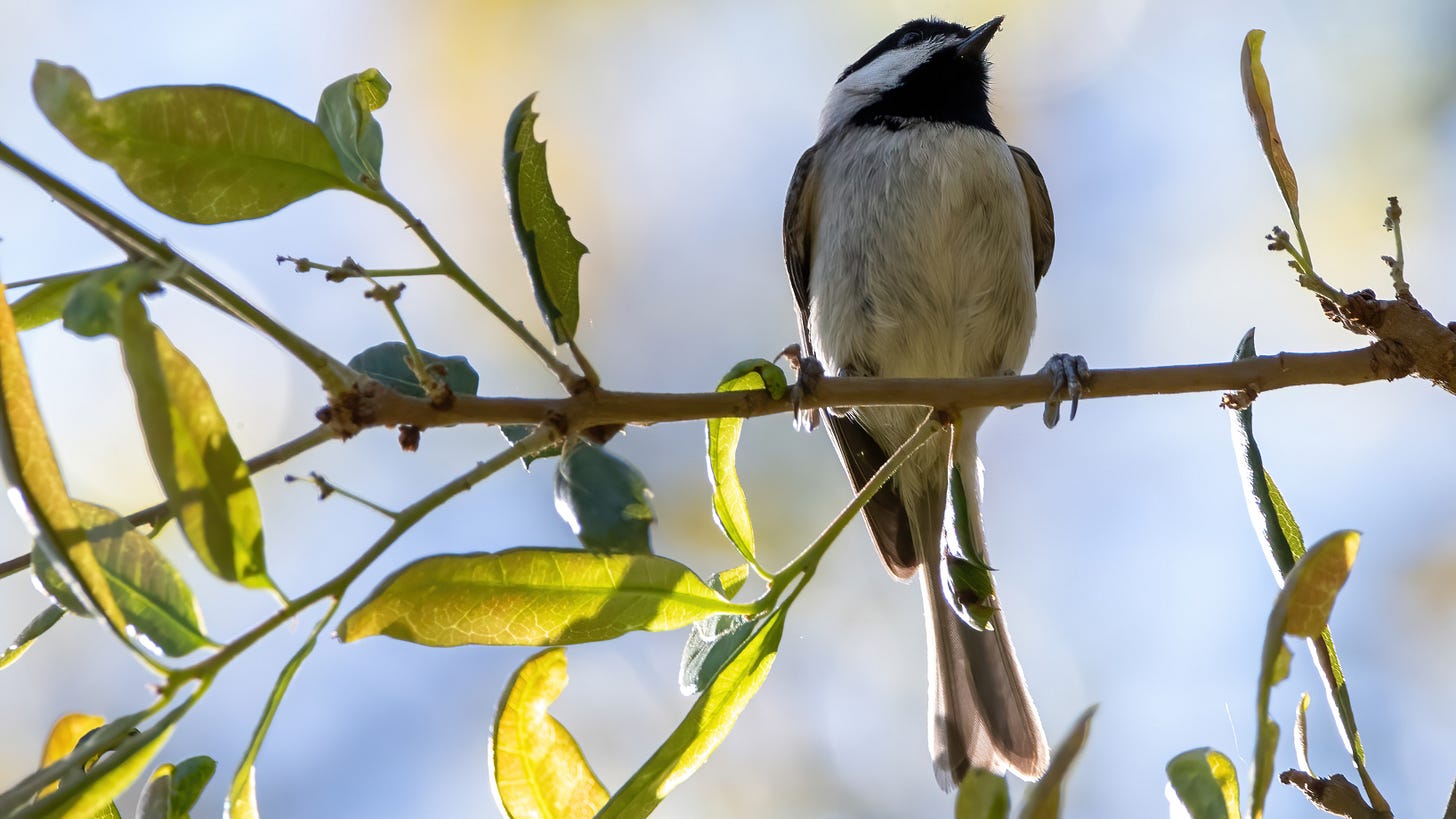
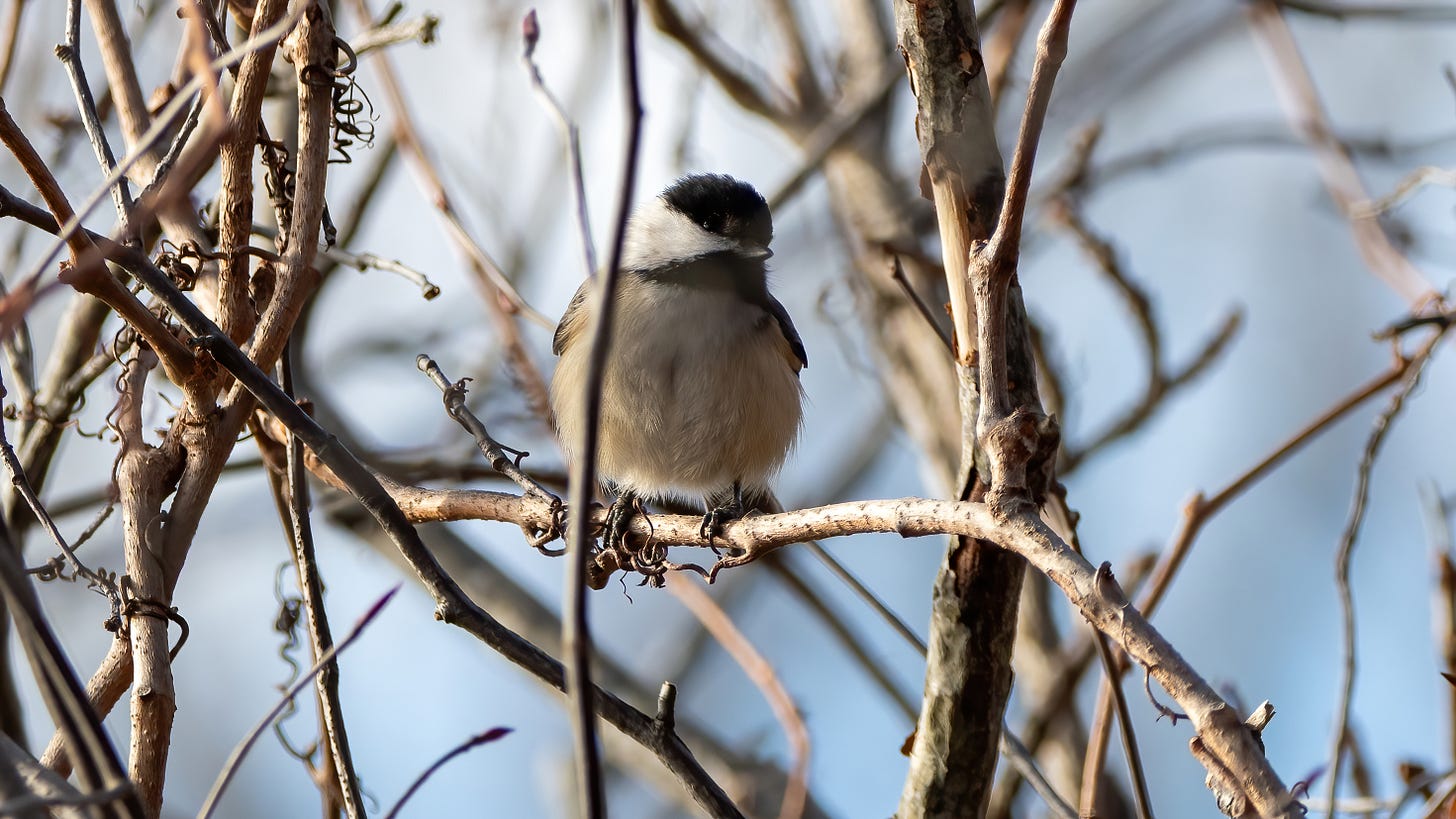
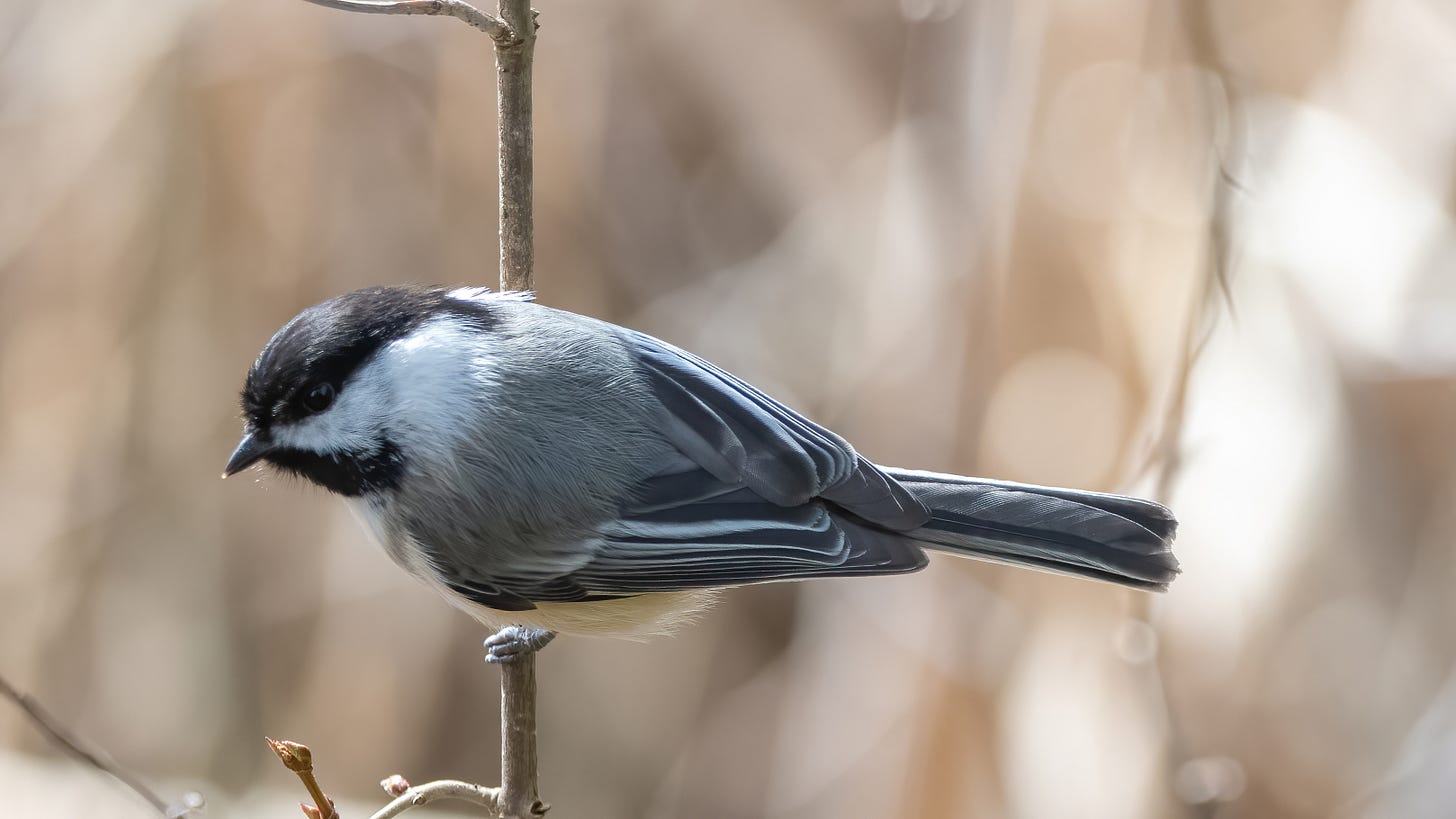
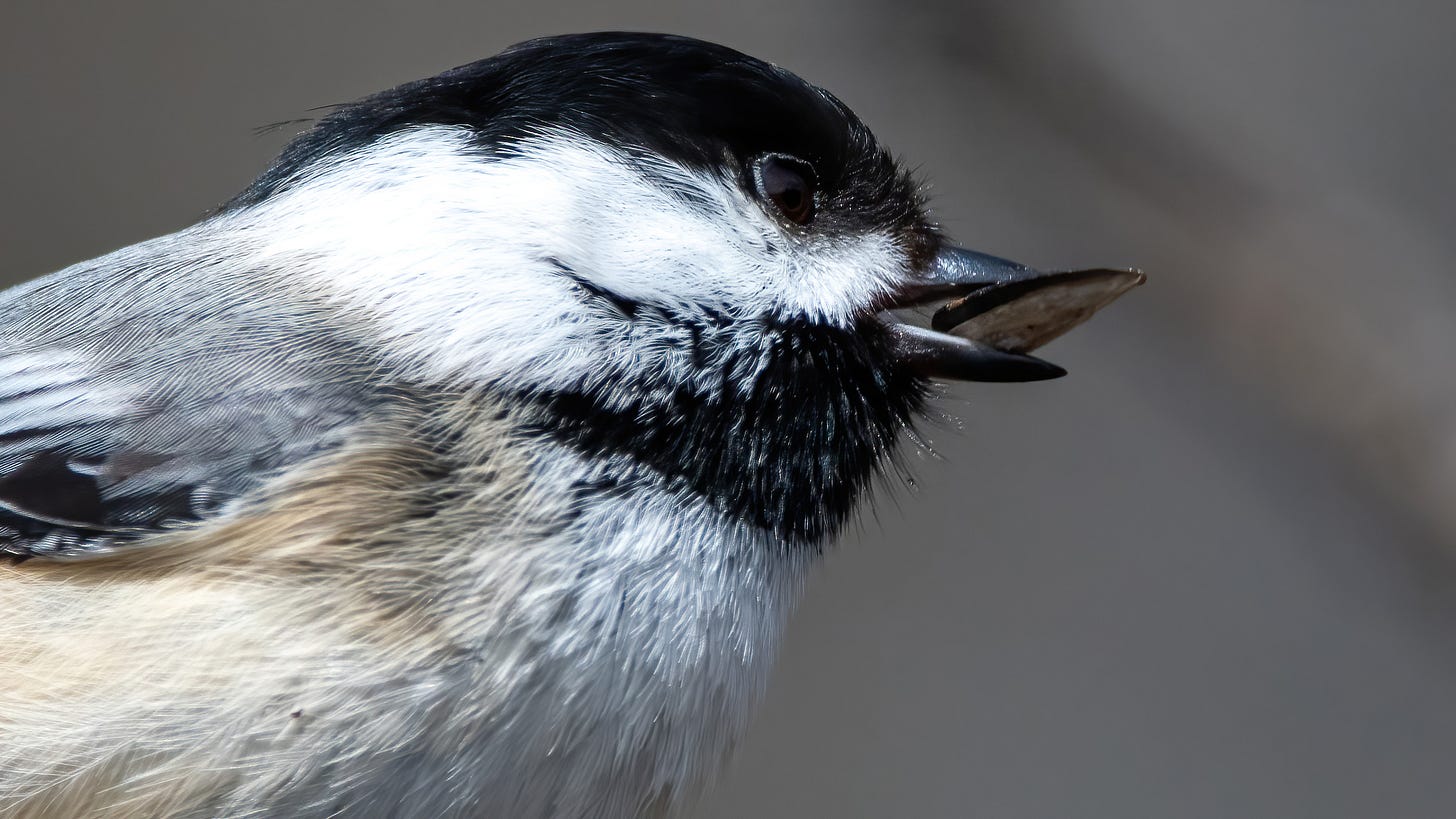
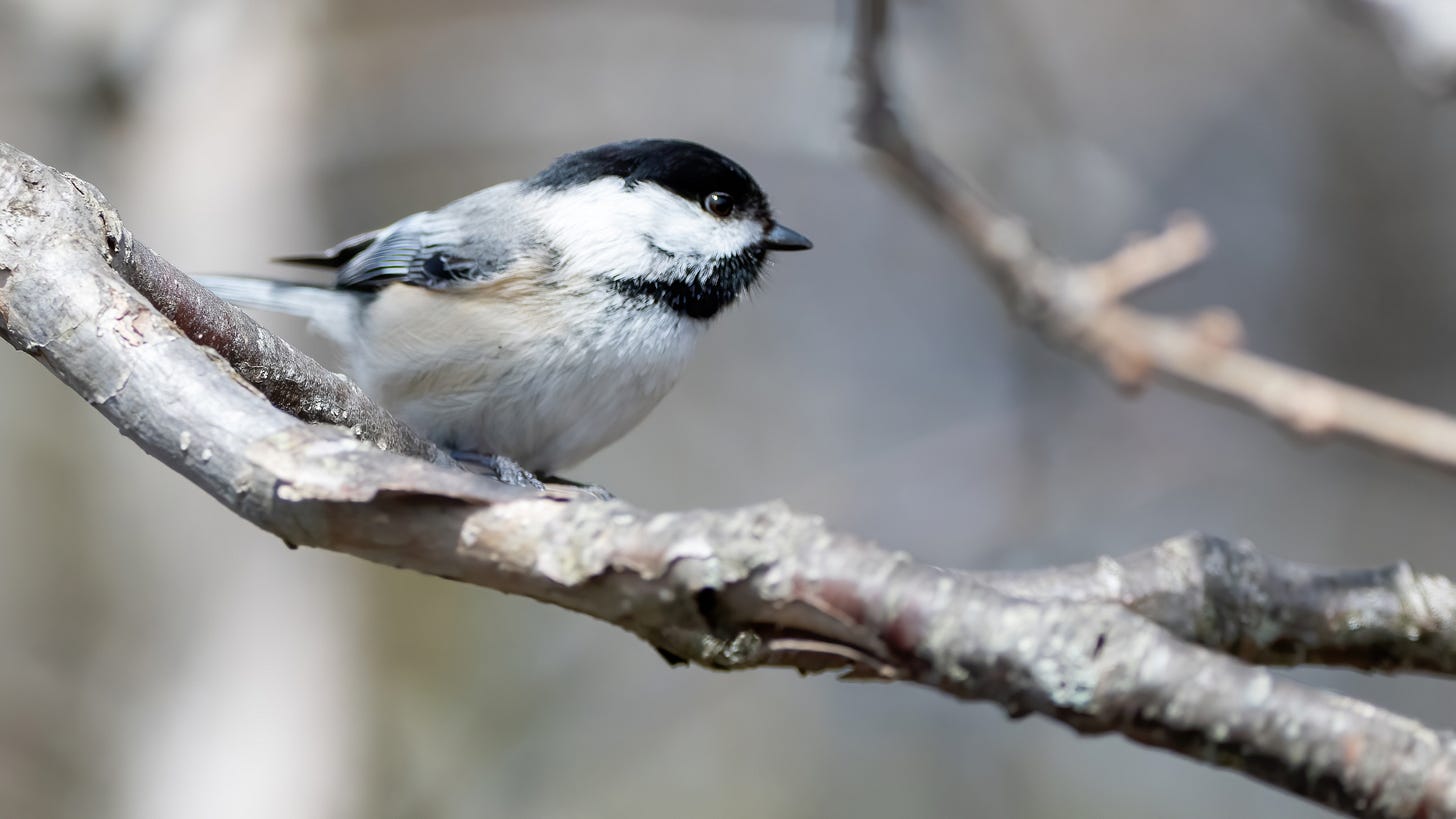
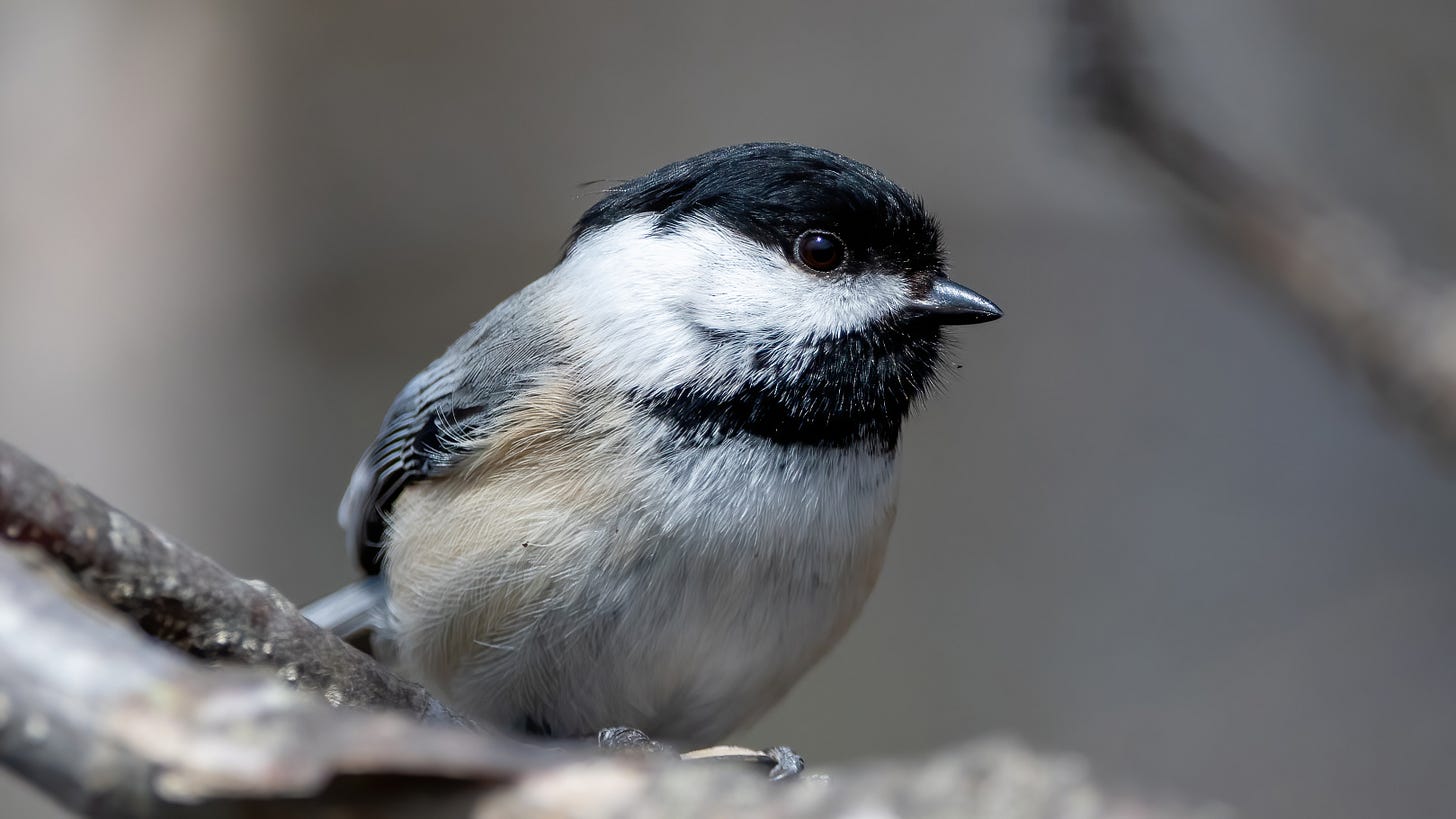


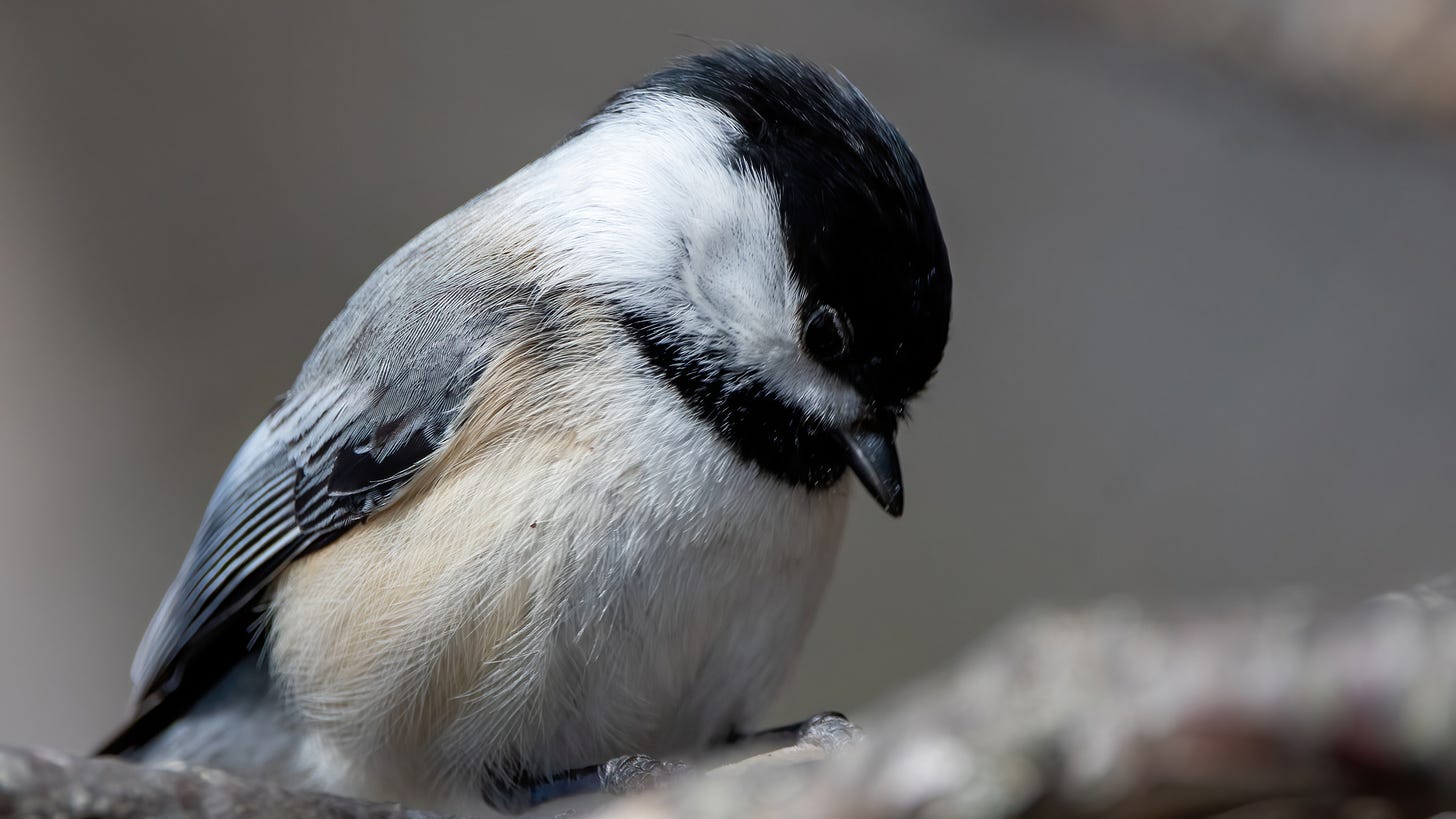



Superb writing about the Chickadee, my favorite bird in my backyard in Virginia Beach, VA. Also, the Chickadee is a superior flying acrobat. Tiny little beauties singing the cheeseburger song (as my wife described long ago on her own), before my seeing that description just now on Mr. Freitas' Substack.
Excellent essay on the Black-capped Chickadee, James. I like that image #17 of yours of the chickadee. That's amazing about their memory for storing and caching food.
They've become like trail companions on my hikes. I have regulars that I check in with and leaves seeds and nuts at regular checkpoints. Thanks for sharing